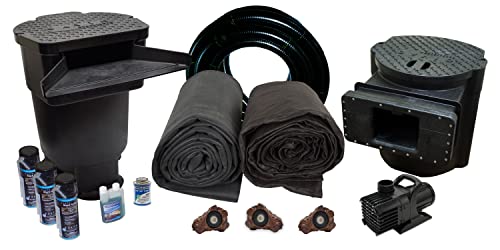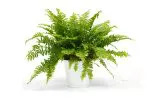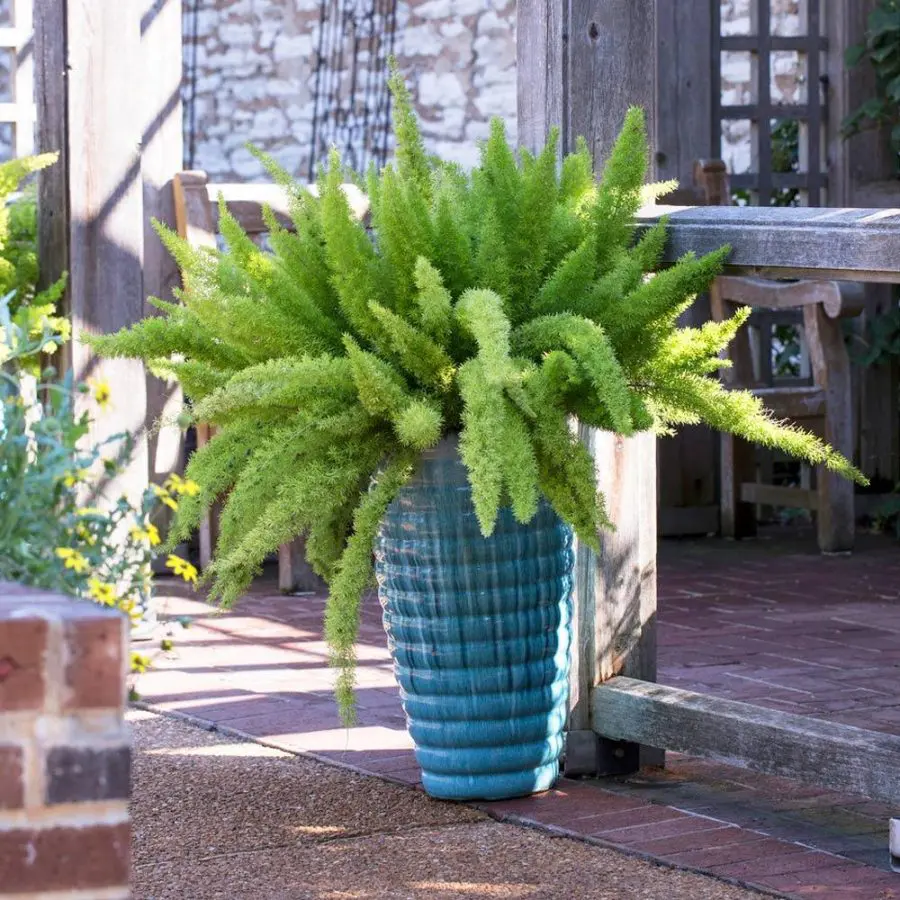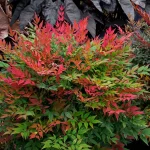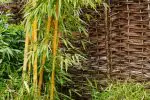This post contains affiliate links. If you buy something from one of our links we may earn a commission. Thanks
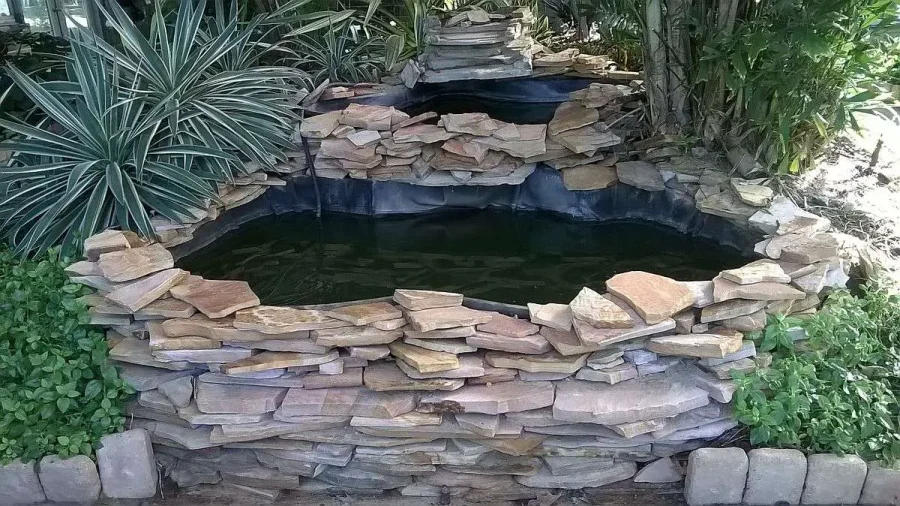
The Pros And Cons Of The Above Ground Pond
I must admit to being partial to the above-ground pond. There are three basic koi pond design configurations for building a koi pond.
We are talking about how the pond sits with the lay of the land. Each pond design has its own advantages and disadvantages.
The above ground pond is ideal for rocky soil or high water table areas, offering safety for young children and deterring predators due to its height. Although the most expensive and formal-looking, it requires minimal digging, avoids runoff issues, and brings the water surface closer to eye level for better koi viewing.
Ultimately it really comes down to the pond builder’s preferences. Although one pond design is not necessarily better than another, there are situations where one type may be a better choice than another.
In Ground Koi Pond Design
These are by far the simplest and cheapest ponds to build. If you want a natural-looking koi fish pond as opposed to a more formal one this is the way to go.
Nothing is simpler than digging a hole and installing a pond liner. There are some possible disadvantages to this type of pond as well.
They are prone to runoff or flooding problems. If you also have a dog they may use it as a swimming hole and do a lot of damage.
They are easier and more inviting targets for predators. They are the least safe type of pond to have if young children are present.
Under these conditions, an above-ground pond is a better option.
Another disadvantage is that your pump will work harder because it won’t have a flooded suction unless you can dig a hole to put it in.
The same goes for your filter. Unless you dig a deep enough hole by the pond you won’t be able to take advantage of a gravity bottom drain.
Finally, this type of koi pond design requires the most digging. This is hard work and it doesn’t end there.
The dirt will also need to be moved. This is a lot of extra work. Since most of the diggings will be subsoil it is not something you want to spread on your flower beds and there will be way too much to dispose of that way.
The Partially Above Ground Pond

A partially above-ground koi pond is a good compromise between an in-ground and fully above-ground pond.
They do cost more to build but they offer some real advantages. The most notable is less digging and less fill to get rid of.
If you bank the fill against the walls it’s possible to make them look fairly natural.
If you want a 4-foot deep pond for example you can dig 2 feet deep and add a 2-foot block wall.
This is how I built my koi pond. Trust me when I tell you it’s easier to move concrete blocks than dirt.
The partial wall creates a barrier that stops runoff and makes it harder for a child to fall in.
In situations where drainage is poor, this or a fully above-ground pond may be your best option.
The Above Ground Pond
These are definitely the most expensive to build. In some ways, they are easier because you have minimal digging and virtually no fill dirt to remove.
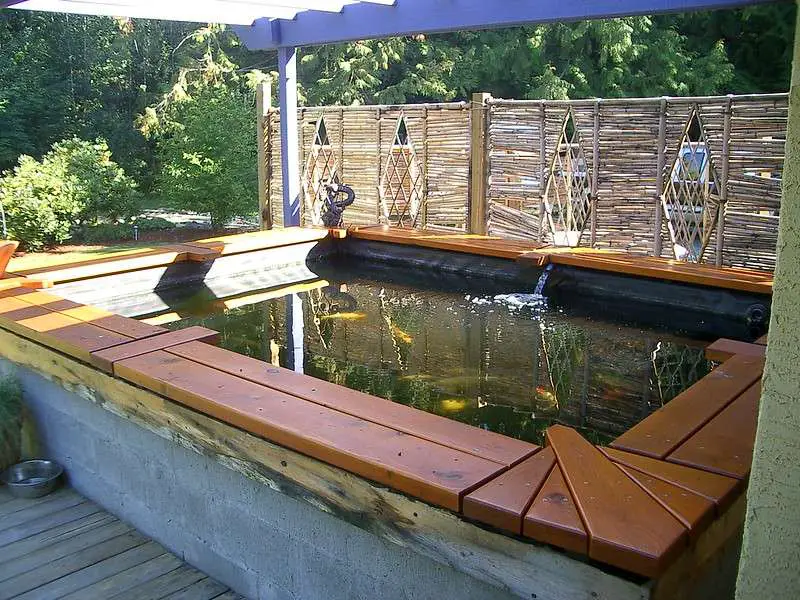
In really rocky soil conditions or high water tables or other problem drainage areas these may be your best choice.
These can work really well in a formal setting. You can use planter boxes or put a deck around them easily and hide some of the height if it bothers your aesthetics.
If young children are around they are definitely the safest choice and they may deter Old Blue from turning your koi pond into a swimming hole.
The straight walls make them less likely to attract predators because they prefer wading not swimming.
Also, they don’t like being highly visible so are less likely to even try to climb to the top where they are easily seen.
Final Thoughts On Koi Pond Design And An Above-Ground Pond
Personally as far as koi pond design goes I prefer a partially above-ground koi pond. When I built my koi fish pond this is what I did.
I had some drainage concerns because the area had puddles in the winter. The water table is fairly close to the surface in the winter.
Also to save money and just plain make life hard I decided to dig my pond by hand.
Having spent a lot of time on the business end of a shovel I was looking for a way to do less digging.
Something I didn’t mention above and didn’t even consider at the time I was building my koi fish pond, was viewing.
Koi are meant to be viewed from above. Good thing too because they don’t look like much from the side.
By raising your pond you bring them and the water surface closer to your natural eye level.
I have found this koi pond design feature alone to be a great reason for building an above-ground pond.
Get Started With A Koi Pond Kit
Savio makes great stuff. I use their skimmer and waterfall in my pond. This kit is good for 1000-1800 gallon koi fish ponds. More sizes are available on Amazon.
 FAQ
FAQ
Q: What are the three basic koi pond design configurations?
A: The three basic koi pond design configurations are in-ground, partially above-ground, and fully above-ground.
Q: What are the advantages and disadvantages of an in-ground koi pond design?
A: Advantages of an in-ground koi pond design include being the simplest and cheapest to build and having a natural-looking pond. Disadvantages include being prone to runoff or flooding problems, being an easy target for predators and not being as safe for young children.
Q: When would a fully above-ground pond be the best choice?
A: A fully above-ground pond would be the best choice in situations where the soil is rocky, the water table is high, or drainage is poor. They are also the safest option for young children.
Final Thoughts
In conclusion, when it comes to koi pond design, there are three main configurations to choose from: in-ground, partially above-ground, and fully above-ground.
Each design has its own advantages and disadvantages and ultimately it comes down to the pond builder’s preferences.
In-ground ponds are the simplest and cheapest to build but are prone to runoff and flooding problems, and are not as safe for young children.
Partially above-ground ponds offer a compromise between in-ground and fully above-ground ponds and are easier to construct, but they do cost more.
Fully above-ground ponds are the most expensive to build but are the best option for rocky soil conditions, high water tables, or poor drainage areas.
They are also the safest option for young children.
Ultimately, the choice of pond design will depend on the specific needs and preferences of the pond builder.
Read more: Water Gardening for Beginners: 11 Tips For Successful Water Gardens

